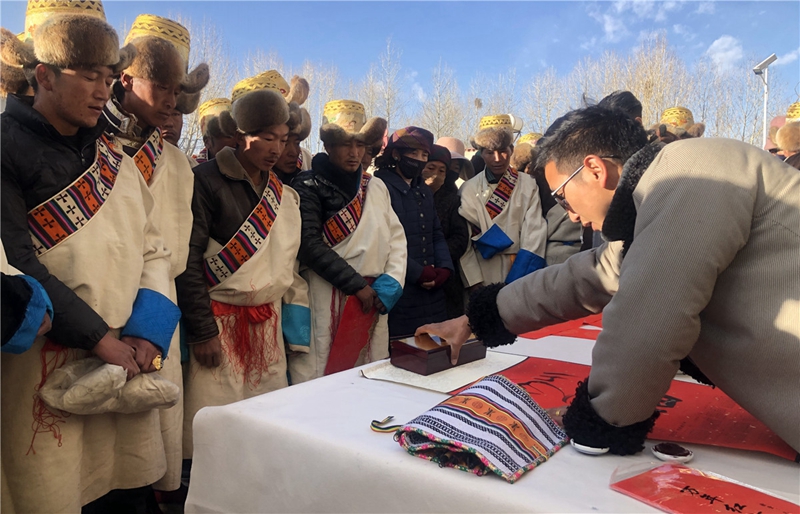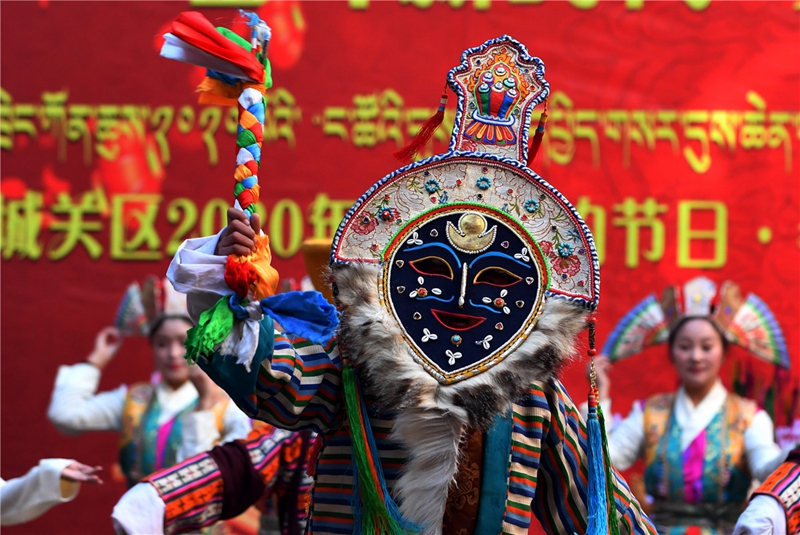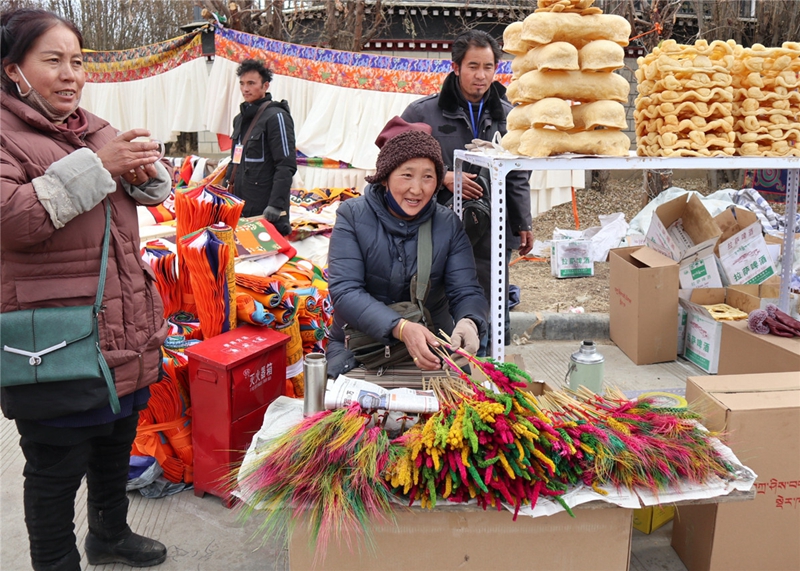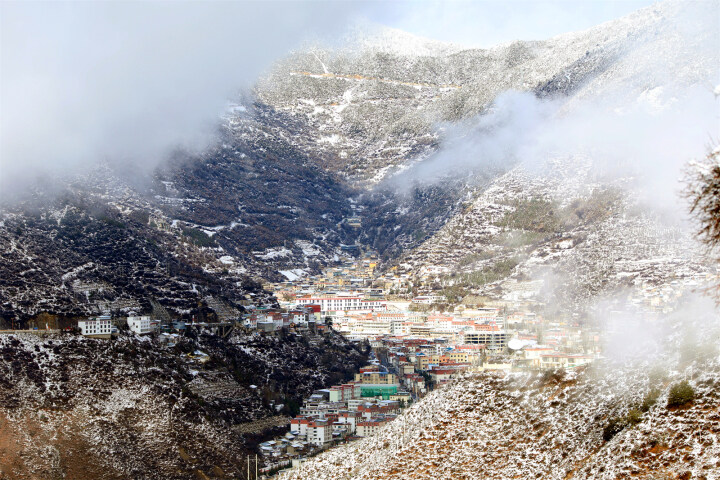
Tibetan villagers wait to receive New Year Festival couplets made by a Tibetan calligrapher at Dongkar, a township in the Samdrubtse district of Shigatse, on Friday. [Photo by PALDEN NYIMA/CHINA DAILY]
In the days leading up to the twoweek-long Sonam Losar New Year Festival, which starts on Friday, residents of Shigatse, in the Tibet autonomous region, are busy shopping at the New Year goods market, enjoying the better life made possible by government programs.
Shoppers head to the New Year markets for featured holiday goods such as metal-plated sheep skulls, cheese, butter, dried barley sheaths and Tibetan robes.
Sonam Losar New Year is a local Tibetan New Year celebration observed mainly by farmers in Shigatse. It comes one month ahead of Tibetan Losar New Year, the autonomous region's general New Year celebration. This year, Sonam Losar New Year falls on the same day as Spring Festival.
The two Tibetan New Year celebrations are among the most important festivals of the year. People carefully shop for the feasts they host. And meat is at the top of the New Year shopping list for most Tibetan farmers, as it is regarded as the best food for entertaining guests.

Residents put on performances to celebrate the Sonam Losar New Year in Shigatse, the Tibet autonomous region, on Jan 17, 2020. [Photo by PALDEN NYIMA/CHINA DAILY]
Poverty alleviation
Thanks to the government's poverty alleviation campaign in the past few years, more people have some money to spare, so New Year spending budgets have increased.
Lhakpa Butri, 36, lives in Shaitonmon county, one of the 19 places in the Tibet autonomous region lifted from poverty in 2019. Her family was among the last ones removed from the poverty list.
"This year, I am going to celebrate our New Year in our new home, which was provided by the government for the village's poverty alleviation relocation project," she said, adding that her family didn't have a proper house before they were relocated last year.
Lhakpa does environmental patrol work in the village and receives an annual subsidy of 3,500 yuan ($510) from the government.
"During the last New Year, we were very poor, so I could only afford two sheep, but for this coming New Year, I bought a cow's leg, and three sheep," Lhakpa said.
"We no longer suffer from hunger and cold, and there are huge varieties of shopping goods compared with previous years," she said.
Apart from meat, her family has also bought many other goods for the festival, including snacks, beer, and New Year couplets featuring Tibetan cultural elements.
"I am so excited about celebrating the New Year in the new location, where it's easy for many villagers to gather for dance and songs," she said.

In the days leading up to the twoweek-long Sonam Losar New Year Festival, which starts on Friday, residents of Shigatse, in the Tibet autonomous region, are busy shopping at the New Year goods market. [Photo by PALDEN NYIMA/CHINA DAILY]
Government support
Tsering, a farmer from Shaitonmon county, also spoke of her happiness and said the living conditions of her previously impoverished family had greatly improved through stable work and various types of support from the government.
Now working in a biotechnology pilot zone in the town, a government supported poverty alleviation enterprise, she said she receives a monthly salary of 3,500 yuan from the company and an additional 3,500 yuan per year from the government for her work protecting the environment.
Like Tsering's family, about 34,800 residents of counties such as Namling, Saga, Lhaze, Gyalze, Shaitonmon and Sakya were lifted from poverty last year, according to the Shigatse city government.
Tsering said she was able to buy more meat for this New Year as well as new clothing of a better quality and design, and "a lot of cow butter for my parents, so they can have their favorite butter tea for a long time, which will all make this year's holiday much happier".
Dorje, 63, of Shaitonmon county, said he credits the government's support for improving local residents' livelihoods, which has greatly boosted people's quality of life.
In 2019, the average annual per capita rural dispensable income in Shigatse was 12,140 yuan, an increase of 72.4 percent over that in 2015, according to the city government.
"In the past, people looked forward to the arrival of New Year because they wanted to buy new clothes and have nice food. But now we have better life, and it's like living in holidays all the time," Dorje said.
|








7740f3b5-9ecb-438e-9052-76cb2d4bb671.jpg)

